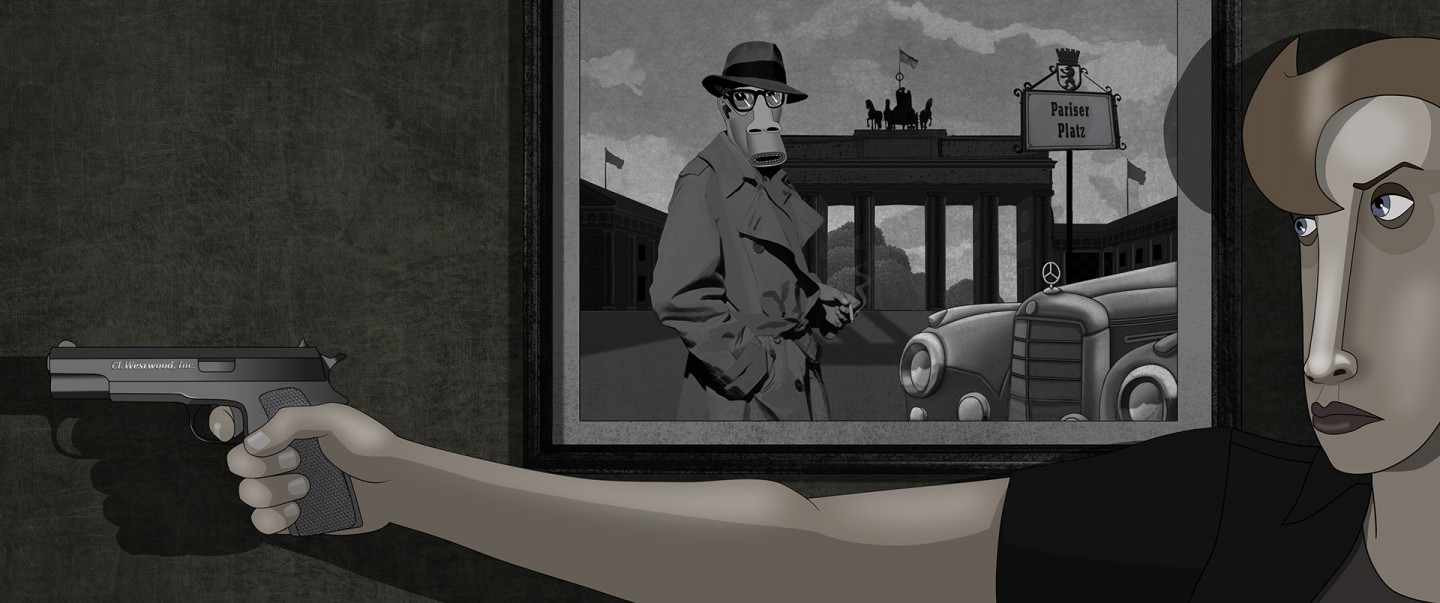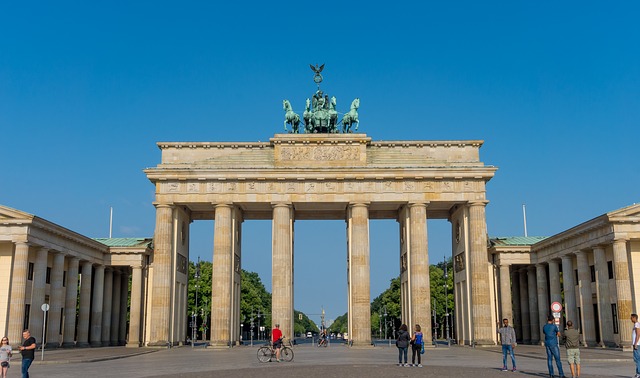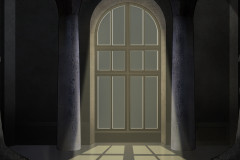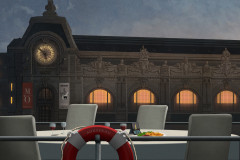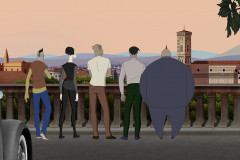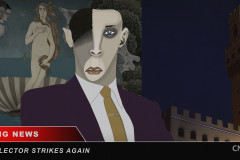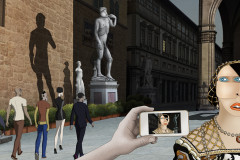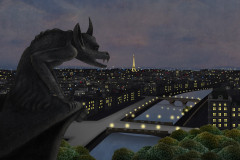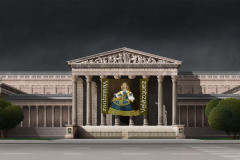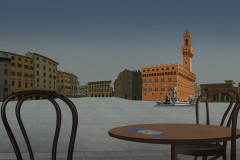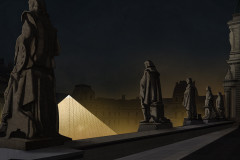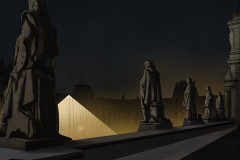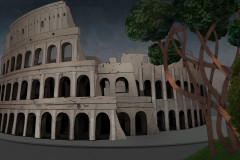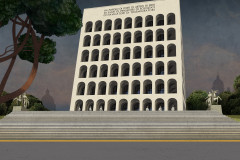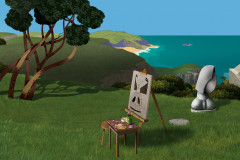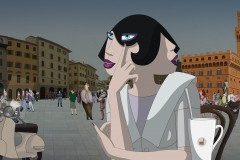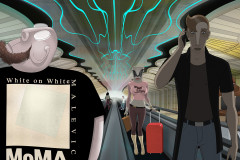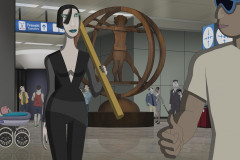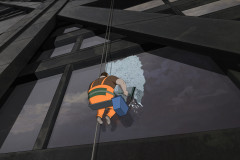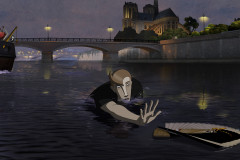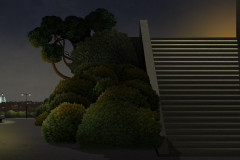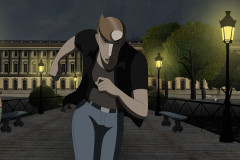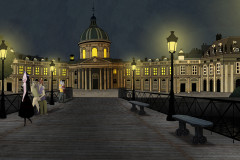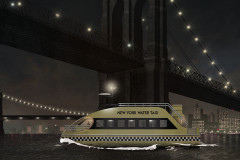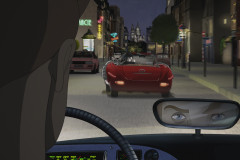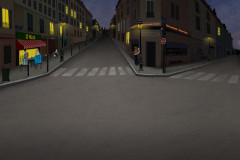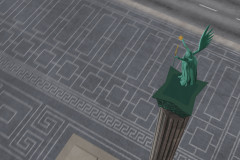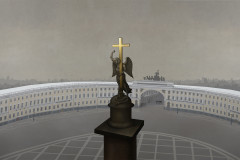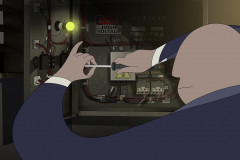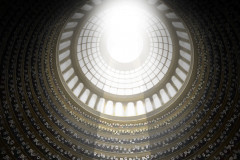Ugye hogy ismerős volt az az építmény a Cooper nyomozót ábrázoló régi fotón? Ha máshonnan nem is, a törikönyvből tuti rémlik. Nem véletlenül, a Brandenburgi kapu tényleg egy szimbolikus német emlék.
II. Frigyes Vilmos porosz király monumentális vámkaput álmodott meg Berlin szívébe. A 26 méter magas klasszicista építmény előképe az athéni Akropolisz bejárati csarnoka, a Propülaia volt. Mindkét oldalon 6-6 dór oszlop áll, ezek 5 kapunyílást fognak közre. A Brandenburgi kapu 1791-re készült el, ezután került rá a győzelem istennőjének, Nikének a bronzszobra, aki négy lovas szekerén (quadriga) behajt a városba.
Lassan 30 éve újra át lehet sétálni a Brandenburgi kapu oszlopai között. A német főváros jelképe a Berlini fal építését követően évtizedekig le volt zárva, hiszen a kapu jelentette a határt Kelet- és Nyugat-Berlin között. El tudod képzelni, hogy a városod egyik pillanatról a másikra két részre lesz bontva? Hogy néhány haverodhoz mostantól nem tudsz átmenni fifázni? Hát Berlinben pedig pont ez történt. Erre a helyzetre reagál egyébként a film végi tokiói pop art-kiállítás az egyik műve, ahol egy nő egyik mellén az Ost-Berlin, másikon a West-Berlin felirat látható. Hogy lehetne elválasztani egyiket a másiktól? 1989-es újranyitása óta az egységes Németország szimbólumává vált a Brandenburgi kapu. John Cooper, ex-CIA ügynök sem véletlenül pózol a Pariser Platz-on: így utal a kép egyértelműen a németországi múltjára. A fotóra persze kellett egy Mercedes is.
Brandenburg Gate
That structure in the old photo of Detective Cooper looked familiar, didn’t it? Even if just from your history textbook. No surprise—the Brandenburg Gate is one of Germany’s most iconic monuments.
King Frederick William II of Prussia envisioned a monumental customs gate in the heart of Berlin. The result was a 26-meter-high neoclassical triumph: its design was inspired by the Propylaea, the gateway to the Athenian Acropolis. On each side, six Doric columns frame five passageways. Completed in 1791, the gate was later crowned with a bronze sculpture of Nike, the goddess of victory, riding a four-horse chariot (quadriga) into the city.
It’s now been nearly 30 years since people could once again walk freely through the columns of the Brandenburg Gate. After the construction of the Berlin Wall, the gate was closed for decades—marking the border between East and West Berlin. Imagine waking up one day to find your city cut in half. Some of your friends? Suddenly unreachable. That’s exactly what happened to Berliners. The film’s final pop art exhibition in Tokyo includes a piece referencing this history: a woman’s chest bears the words Ost-Berlin and West-Berlin on either side—how could one separate the two?
Since its reopening in 1989, the Brandenburg Gate has become a symbol of German reunification. So it’s no coincidence that ex-CIA agent John Cooper is shown posing in Pariser Platz in front of the gate—it’s a subtle nod to his past in Germany. And yes, of course, the photo wouldn’t be complete without a Mercedes.






